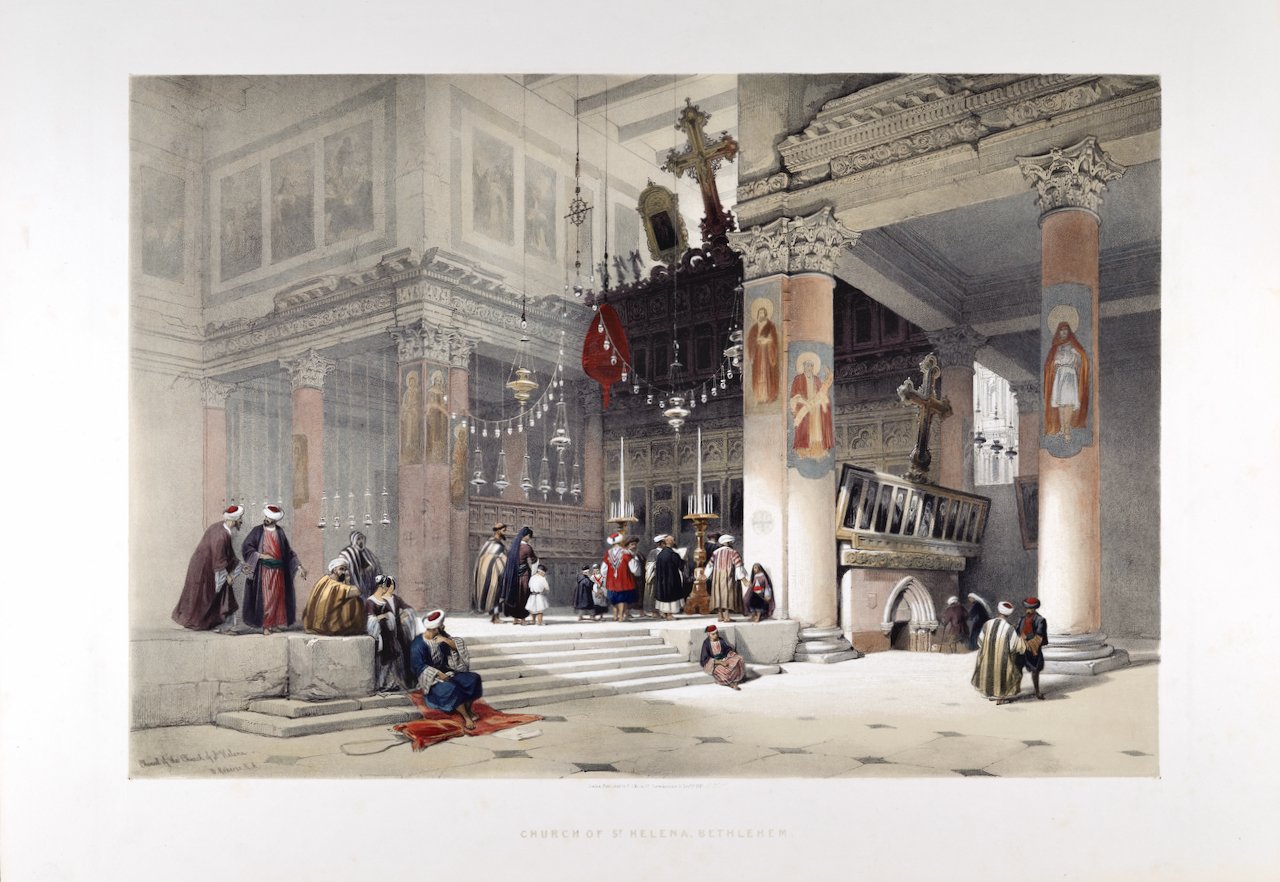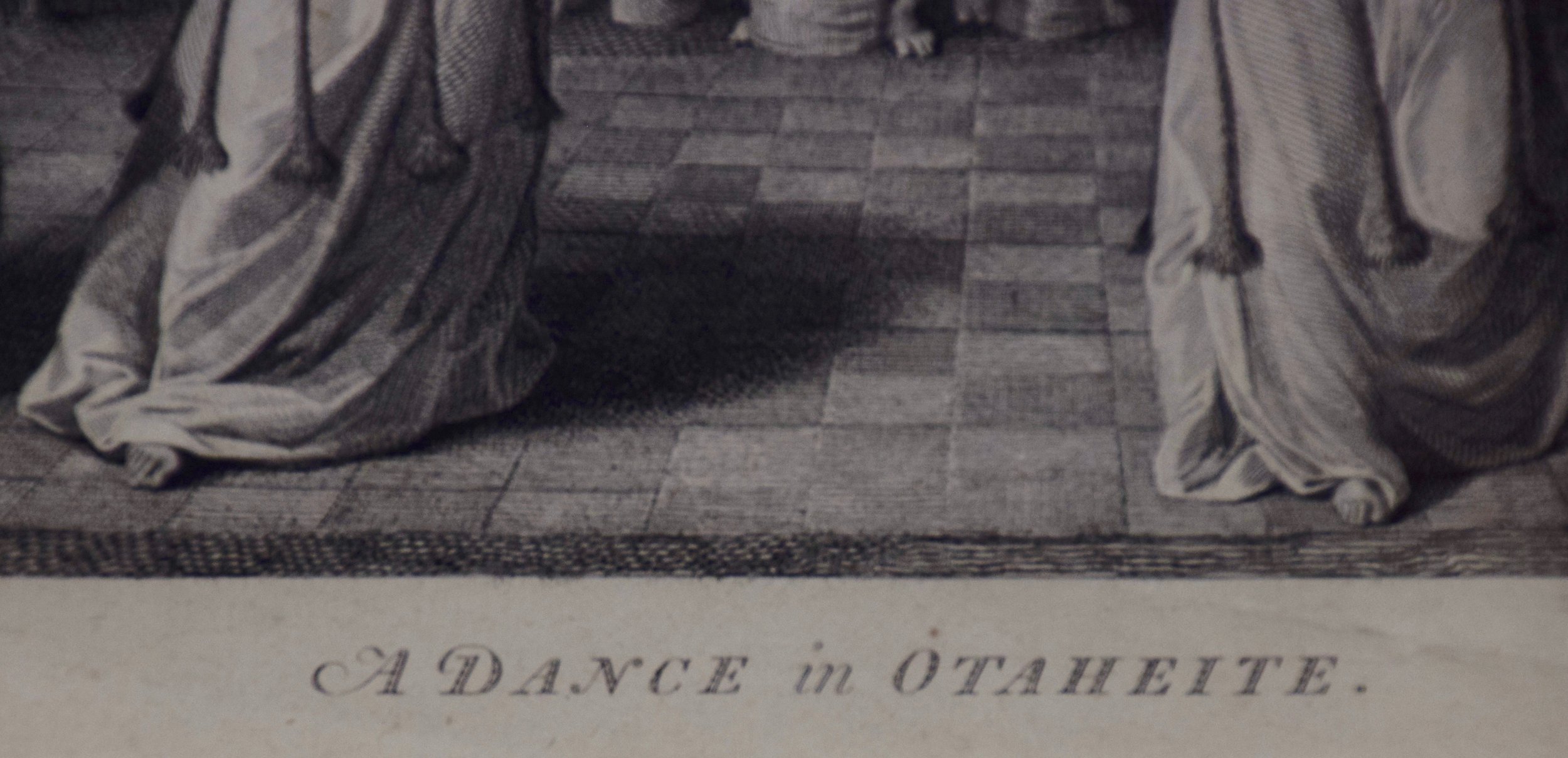Church of St. Helena, Bethleham: Roberts' 19th C. Hand-colored Lithograph
This is an original 19th century hand-colored lithograph entitled "Church of St. Helena, Bethlehem" by David Roberts, plate 43 in volume II from his Egypt and Nubia volumes of the large folio edition, published in London by F. G. Moon in 1842. The lithographs were prepared by Louis Haghe (1806-1885) from drawings and paintings by Roberts. The resultant large folio editions of 'The Holy Land' and 'Egypt & Nubia' are considered the greatest lithographically illustrated works issued in the 19th century.
Creator: David Roberts (1796-1864, British)
Creation Year: 1842
Dimensions: Height: 16.88 in (42.88 cm)
Width: 23.88 in (60.66 cm)
Medium: Lithograph
Condition: See description below.
Reference #: 3201
This is an original 19th century hand-colored lithograph entitled "Church of St. Helena, Bethlehem" by David Roberts, plate 43 in volume II from his Egypt and Nubia volumes of the large folio edition, published in London by F. G. Moon in 1842. The lithographs were prepared by Louis Haghe (1806-1885) from drawings and paintings by Roberts. The resultant large folio editions of 'The Holy Land' and 'Egypt & Nubia' are considered the greatest lithographically illustrated works issued in the 19th century.
Creator: David Roberts (1796-1864, British)
Creation Year: 1842
Dimensions: Height: 16.88 in (42.88 cm)
Width: 23.88 in (60.66 cm)
Medium: Lithograph
Condition: See description below.
Reference #: 3201
This is an original 19th century hand-colored lithograph entitled "Church of St. Helena, Bethlehem" by David Roberts, plate 43 in volume II from his Egypt and Nubia volumes of the large folio edition, published in London by F. G. Moon in 1842. The lithographs were prepared by Louis Haghe (1806-1885) from drawings and paintings by Roberts. The resultant large folio editions of 'The Holy Land' and 'Egypt & Nubia' are considered the greatest lithographically illustrated works issued in the 19th century.
Creator: David Roberts (1796-1864, British)
Creation Year: 1842
Dimensions: Height: 16.88 in (42.88 cm)
Width: 23.88 in (60.66 cm)
Medium: Lithograph
Condition: See description below.
Reference #: 3201
The print depicts a view of the interior of the Church of St. Helena (also known as the Church of the Nativity), near the altar. The church is located in Bethlehem, in the West Bank of Palestine. Roberts visited the site between April 4-6, 1839. Men, women and children dressed in colorful traditional local garb are involved in various activities, some praying at the shrine, as part of a religious service, others talking in small groups or resting on the steps.
The church was originally commissioned in 327 by Constantine the Great and his mother Helena over the site that was traditionally considered to be located over the cave that marks the birthplace of Jesus. Constantine was the first Roman emperor to convert to Christianity. He made Christianity the official religion of Rome. He founded Constantinople, which became the most powerful city in the world. The Church of the Nativity site's original basilica was completed in 339, but it was destroyed by fire during the Samaritan Revolts in the 6th century. A new basilica was built 565 by the Byzantine Emperor Justinian, restoring architectural aspects of the original. Due to its cultural and geographical history, the site holds a prominent religious significance, most importantly to Christians.
The lithograph is signed and titled in plate in the lower left. These are reportedly in Roberts' own handwritten script, as it appeared on the original sketch. This striking hand-colored lithograph is printed on wove paper with wide margins. The sheet measures 16.88" high and 23.88" wide. There is a short, faint elongated spot in the left margin and minimal irregularity of the left edge of the sheet, but the print is otherwise in excellent condition.
The drawings and watercolours from Roberts' tour of the Holy Land and Egypt were collated together into folios and released over a seven year period by the publisher F.G. Moon from 20 Threadneedle Street London. Louis Haghe (the Belgian engraver and friend of Roberts) worked on all of the lithographs for this series.
David Roberts (1796-1864) was born outside of Edinburgh, Scotland. At age 10 he became a house painter’s apprentice. He continued painting houses and eventually theater scenes in Edinburgh and then in London. His friend, J. M. W. Turner, recognized his artistic talent and encouraged him to become a full-time artist.
In 1839 Roberts traveled to Egypt and then in 1840, through the Holy Land, concluding in Jerusalem. Upon his return to England, F. G. Moon agreed to publish lithographs created by Louis Haghe from Robert’s sketches and watercolors. This publication was highly acclaimed and very popular for its esthetic quality, its historical and topographical accuracy, and Robert’s dramatic depiction of his scenes. Queen Victoria and Charles Dickens were among the subscribers who collected his works. Roberts' and Haghe’s duotone lithographs, often colored, remain extremely sought-after today and have been rising steadily in value.

















































